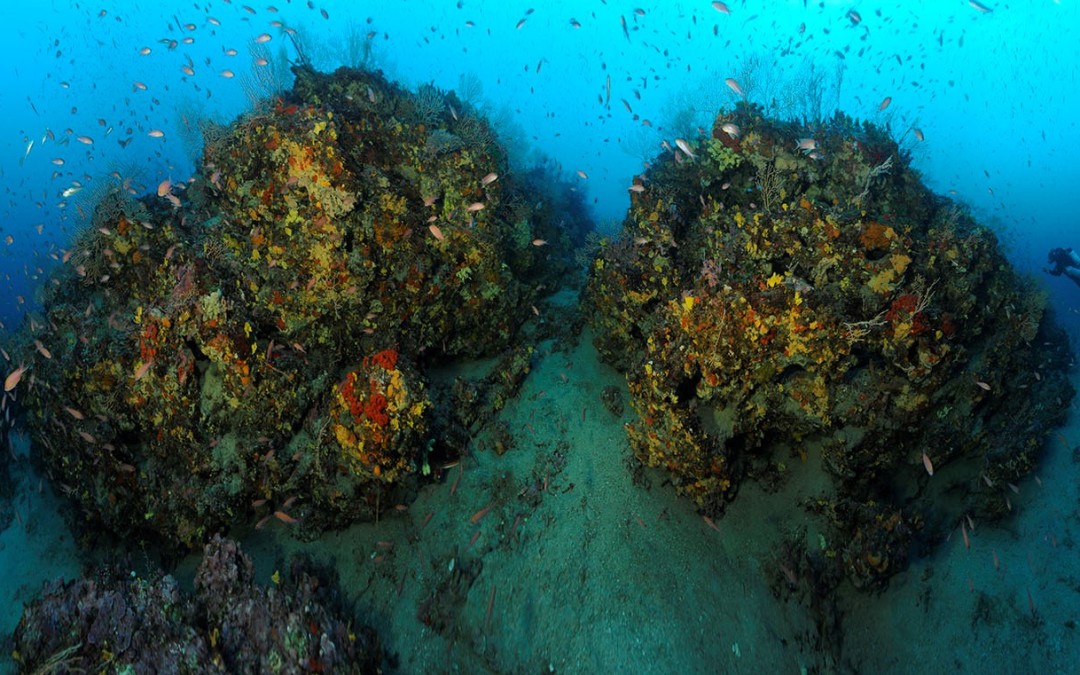Reef Of Riches
Editor’s note: This post is about the underwater discoveries of a recent species survey. Learn about this expedition’s terrestrial findings.
Four years ago, after thoroughly surveying the reefs of Timor-Leste’s Nino Konis Santana National Park, I and a team of Conservation International (CI) marine researchers were delighted to spend the final day of our expedition diving around the island of Atauro. Within minutes of hitting the water, I knew this was a special place — healthy corals draping the sheer walls that dropped off into the abyss, with shoals of colorful reef fishes made all the more spectacular by the crystal-clear visibility.
Our whole team hoped for a chance to one day explore these magnificent reefs more thoroughly — and just two weeks ago, our dream came true.

In our 2012 report to the Timor-Leste government, we urged them to strongly consider creating the country’s second marine protected area around Atauro — an island only 23 kilometers (14 miles) long and maximally 10 kilometers (6 miles) wide that sits a short boat ride north of the capital city of Dili. Since then, the government and local communities have made laudable efforts to set up a network of community-managed reserves around the island in order to improve fishery health and better manage these reefs for their significant marine tourism potential.

Jul 08, 2016 The 10 sites averaged 253 reef fish species per site — the highest average we’ve recorded anywhere on the planet! Three of these sites surpassed the vaunted 300 species mark for reef fishes — a statistic previously only known to be matched by reefs surrounding Indonesia’s Bird’s Head Seascape. 5) Reef of Riches: tropical jungle and on the coral reef. 6) Challenge of Change the Great Rift Valley. One day I will add all of these to my collection. Note to Discovery: please release a box set of Bluray DVDs! Documentary about coral reefs. 'Equator' Reef of Riches (TV Episode 2020) Parents Guide and Certifications from around the world.
By conducting a week-long marine Rapid Assessment Program (RAP) survey around Atauro, we aimed to expand scientific knowledge of the island’s waters in order to help inform their protection. During the course of nearly 120 man-hours of diving, our team of four surveyed 10 sites around the island and recorded every species of reef fish and hard coral we encountered, while also assessing the health of the reefs and fish stocks and the marine tourism potential of each site.
The island certainly lived up to our expectations.

Record average species counts
The 10 sites averaged 253 reef fish species per site — the highest average we’ve recorded anywhere on the planet! Three of these sites surpassed the vaunted 300 species mark for reef fishes — a statistic previously only known to be matched by reefs surrounding Indonesia’s Bird’s Head Seascape.
Overall, we recorded 642 species of reef fish from Atauro — far less than the 1,566 species currently known from the Raja Ampat archipelago in the Bird’s Head, but nonetheless a very impressive number for such a small island, and on par with the total species counts from much larger islands such as Chuuk and Pohnpei in Micronesia or Christmas Island in the Indian Ocean.

An important factor influencing the extremely high diversity of Atauro’s reefs is its unique oceanographic position. The island sits in the middle of the Ombai Strait, with extremely deep waters surrounding it (reaching depths of over 3,000 meters, or 9,800 feet, just a few kilometers from shore) and constant strong currents flushing the reefs with nutrient-rich waters. Blue whales migrate near the island each year, and numerous dolphin and whale species are regularly encountered here — significantly boosting the marine tourism potential for the region.

‘New’ fish discoveries
Reef Of Riches Slot Machine
Perhaps not surprisingly, we also found a number of fish species that appear to be new to science. The wave-washed nearshore reefs of Atauro are home to a beautiful species of Helcogramma triplefin that we are quite sure is undescribed, as well as two coral dwarfgobies in the genus Eviota that may prove to be new as well.
Similarly, the deeper walls of Atauro harbored a wealth of gobies with which we are unfamiliar. We’re currently doing detailed morphological and genetic analyses to confirm whether these are new species, at which point we’ll begin the process of scientifically describing them.
Not all good news
Unfortunately, not all our findings were positive. Our coral team observed a number of reefs that had been previously badly damaged by blast fishing, and we recorded a notable scarcity of larger reef fishes — a sure sign of past overfishing. Sadly, in nearly 120 hours of diving, our team only recorded one shark.
However, the reefs of Atauro are overall in very good shape, and the government of Timor-Leste and local communities recognize the urgent need to better manage these reefs so that they can provide food security from healthy reef fish stocks as well as economic value through well-managed marine ecotourism. Over the coming years, our CI Timor-Leste team is firmly committed to supporting the government, communities and tourism stakeholders to ensure Atauro’s abundant natural wealth can be the basis of a strong local economy.
Mark Erdmann is CI’s vice president for Asia-Pacific marine programs, now based in Auckland after 23 years in Indonesia. Learn about the terrestrial findings of this expedition on Atauro Island here.
Reef Of Riches
Want to read more stories like this? Sign up for email updates.Donate to Conservation International.
Reef Of Riches Slot Play
Further reading